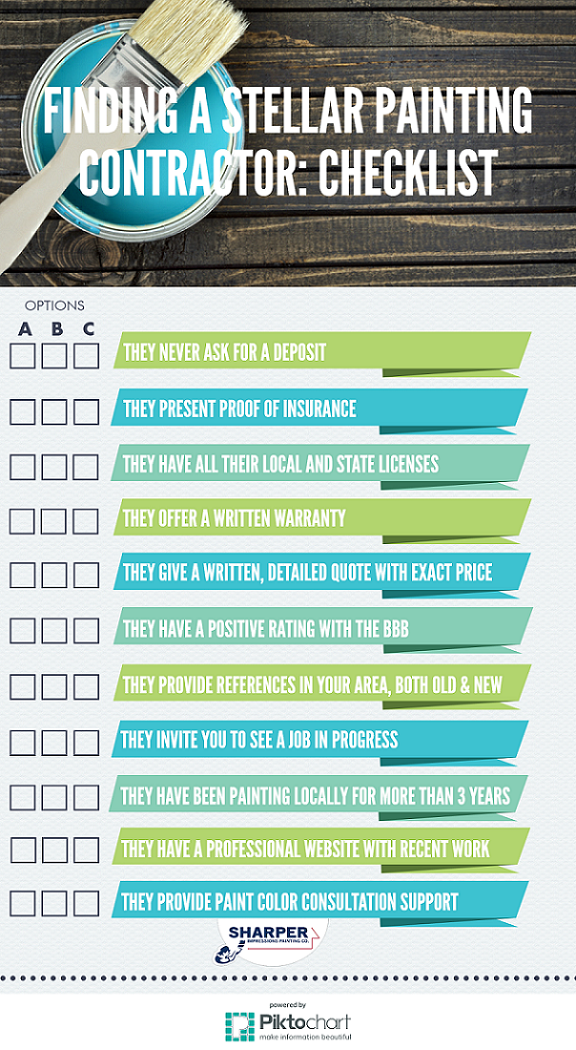Comparing Interior And Exterior Paint: Significant Differences And Their Utilizes
Comparing Interior And Exterior Paint: Significant Differences And Their Utilizes
Blog Article
Web Content By-Hastings Weaver
When you're selecting between interior and exterior paint, it's essential to understand their essential distinctions that influence both efficiency and aesthetics. Interior paints are crafted for lower VOC levels and smoother finishes, making them suitable for interior areas, while exterior paints are made to withstand extreme weather and UV direct exposure. Each type serves an unique purpose, but recognizing when to use one over the other can considerably affect your job's result. So, what aspects should you take into consideration when making your option?
Make-up and Formulation
When picking between interior and exterior paint, recognizing their structure and formula is critical. Interior paints normally contain a reduced amount of volatile organic compounds (VOCs), making them more secure for interior air top quality. You'll see they commonly have a smoother finish, which enhances their ability to withstand spots and allows for simpler cleansing. They're made to withstand the rigors of interior settings, including differing moisture levels and temperature changes.
On the other hand, outside paints are formulated to withstand harsher conditions. They typically include greater degrees of pigments and additives to resist fading from UV rays, in addition to to stop mildew and mold development. Their make-up consists of much more binders and materials, which offer much better bond to surface areas revealed to the elements. This guarantees the paint can endure rain, snow, and fluctuating temperatures without peeling off or fracturing.
Efficiency and Durability
Assessing efficiency and sturdiness is crucial when selecting between exterior and interior paint. Inside paint is created for surface areas that experience less wear and tear. It usually withstands fading and scuffing, making it excellent for living rooms and rooms. Nonetheless, it may not stand up well in high-moisture locations like kitchens and bathrooms without appropriate formulation.
On the other hand, exterior paint deals with harsher problems. It's crafted to withstand UV rays, rain, and temperature level changes. This type of paint usually contains additives that stop mold and mildew and mildew growth, guaranteeing longevity in numerous environments. When you utilize outside paint, you can anticipate it to last several years much longer than indoor paint, provided it's used properly.
One more crucial distinction hinges on the coating options. Inside paints usually have a range of surfaces for aesthetic appeal, while outside paints prioritize sturdiness over sheen. If you're trying to find something that can manage the aspects, exterior paint is your best choice.
In contrast, if you're concentrated on indoor visual appeals with much less problem for extreme conditions, interior paint could be suitable. Eventually, your option must line up with the particular needs of the environment.
Aesthetic Factors to consider
A fresh layer of paint can change an area, yet visual factors to consider play an important duty in your selection in between exterior and interior alternatives. When visit this web page link selecting paint, think about the mood you wish to produce. Interior paint allows you to explore a bigger variety of colors and coatings, allowing you to reveal your individual style and enhance your home's setting. Whether you choose soft pastels or vibrant hues, the best interior paint can make your areas feel comfy, dynamic, or serene.
On the other hand, exterior paint needs to line up with your home's design and the surrounding setting. Below, you're not simply making a design statement; you're additionally thinking about visual appeal. Selecting shades that balance with your neighborhood can enhance your home's worth and visual charm. Remember that Recommended Internet page is additionally subject to fading and climate modifications, so selecting a classic color can conserve you from constant repainting.
Eventually, take into consideration just how each choice fits your vision. By aligning your paint selection with your wanted aesthetic, you can create rooms that show your personality while maintaining performance.
Verdict
When it involves selecting paint, comprehending the essential differences in between interior and exterior choices is important. Interior paints focus on appearances and low VOCs, making them best for enhancing your indoor rooms. In contrast, exterior paints are designed for resilience and climate resistance, securing your home from the elements. By considering your certain demands and the environment, you can with confidence choose the best paint to achieve the appearance and longevity you want for your room.
